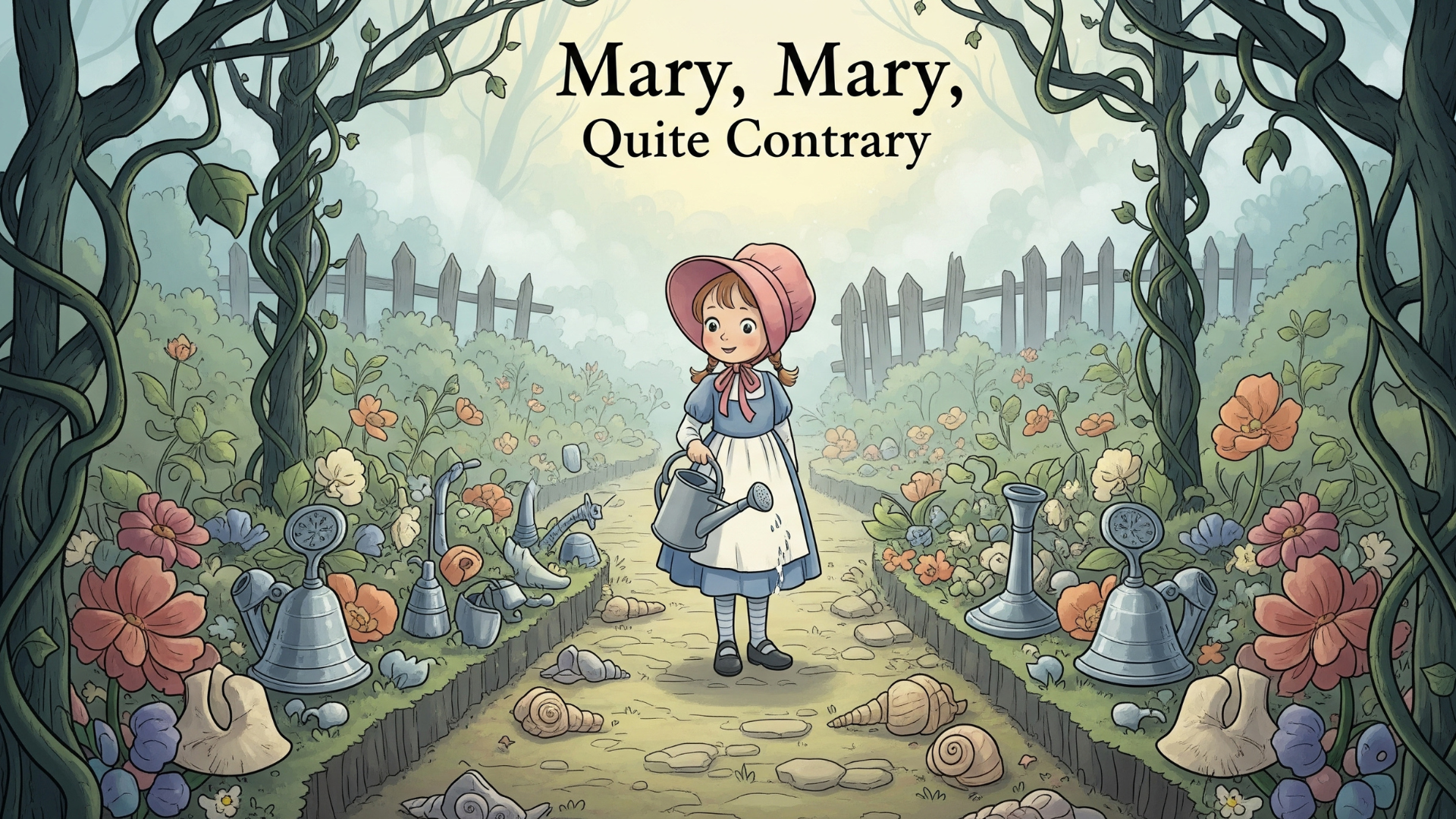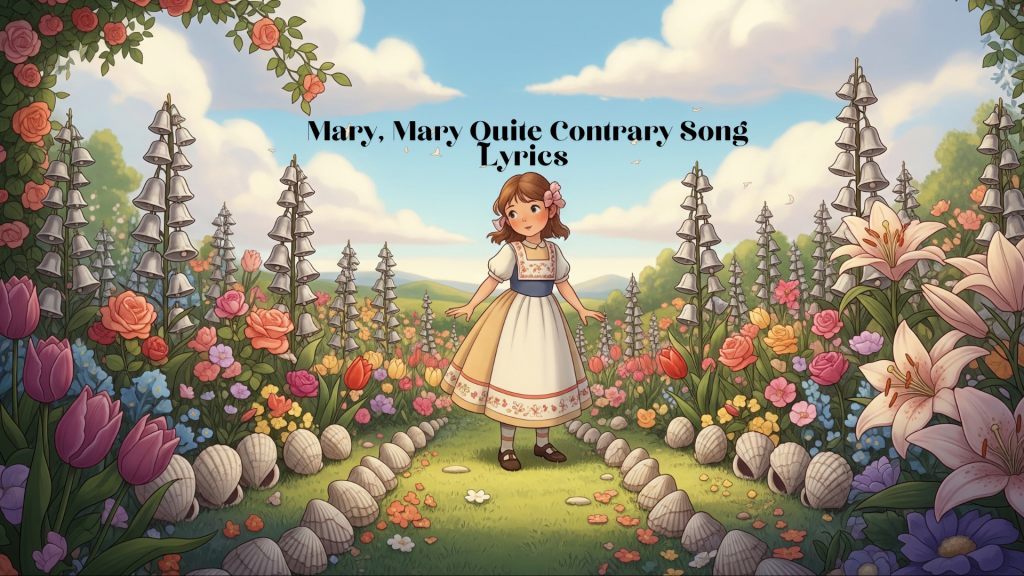Nursery rhymes are short poems or songs enjoyed by young children around the world. Kids often sing them with claps, movements, or actions, making them even more fun.
They are written in easy language and use repeated sounds, making them great for learning words. These rhymes have been around for a long time and are still used in homes and classrooms.
Some make kids laugh, while others teach simple lessons. Above all, nursery rhymes bring joy and help children grow through music and play.
About the Song
Mary, Mary Quite Contrary is a traditional English nursery rhyme known for its rhyme and rhythm. The lyrics sound cheerful, but the meaning behind them is said to be linked to historical events.
Children have sung the song for centuries and it continues to be a part of early education and nursery rhyme collections.
Origins and Cultural Significance
Users seek general information about the nursery rhyme, including its origins, variations, and cultural significance. This rhyme is believed to have started in the 18th century in England, passed down through oral storytelling before it was written in books.
It became popular in homes, schools, and song collections. Over time, small changes in words or tune were made in different places. Today, it helps children learn language, rhythm, and memory skills.
It also creates joy and brings generations together. Though simple, this rhyme remains a meaningful part of early childhood learning and continues to be shared around the world.
Mary, Mary Quite Contrary Song Lyrics

Mistress Mary, Quite contrary,
How does your garden grow?
With Silver Bells, And Cockle Shells,
And so my garden grows.[1]
There is also a version in The Secret Garden (1911) written by Frances Hodgson Burnett with these lyrics:
Mistress Mary, Quite Contrary,
How does your garden grow?
With Silver Bells and Cockles Shells
And Marigolds all in a row.
Several printed versions of the 18th century have the lyrics:
Mistress Mary, Quite contrary,
How does your garden grow?
With Silver Bells, And Cockle Shells,
Sing cuckolds all in a row.[1]
The last line has the most variation, including:
Cowslips all in a row [sic].[1]
and
With lady bells all in a row.[1]
First Variations of Lyrics
Mary, Mary, quite contrary
How does your garden grow?
With silver bells and cockleshells
And pretty maids all in a row
Mary, Mary, quite contrary
How does your garden grow?
With honey bees and cherry trees
Sunflowers under rainbows
Mary, Mary, quite contrary
Where do you long to go?
To meet a friend and pretend
Your whole world is a rose
Mary, Mary, quite contrary
How does your garden grow?
With silver bells and cockleshells
And pretty maids all in a row
Second Variations of Lyrics
Mary, Mary quite contrary,
How does your garden grow?
With silver bells and cockle shells
And pretty maids all in a row.
Mary, Mary quite contrary,
How does your garden grow?
With silver bells and cockle shells
And pretty maids all in a row.
Mary, Mary quite contrary,
How does your garden grow?
With silver bells and cockle shells
And pretty maids all in a row.
Similar Songs Like Mary, Mary Quite Contrary
If you enjoy Mary Mary Quite Contrary, here are other classic nursery rhymes that share a similar traditional and rhythmic style:
- Baa Baa Black Sheep: This rhyme about a polite little sheep sharing wool teaches kindness and politeness. Its soft rhythm makes it great for toddlers.
- Jack and Jill: Starting with a short tale of two children fetching water, this rhyme has simple, memorable lines loved by young learners worldwide.
- Little Miss Muffet: Opening with a girl enjoying her curds and whey, this rhyme introduces surprise and fear through a gentle and rhythmic verse.
- Hey Diddle Diddle: Beginning with a cat and a fiddle, this rhyme plays with silly ideas and fun imagination, making it a timeless favorite.
Frequently Asked Questions
Is Mary, Mary, Quite Contrary a Religious Rhyme?
While it’s often considered a nursery rhyme, some historians believe it could be a reference to religious and political themes, particularly during the time of Queen Mary I.
What makes Mary, Mary Quite Contrary Memorable?
Its catchy tune and timeless, simple storytelling appeal broadly.
Why does Mary, Mary Quite Contrary Focus on a Garden?
The garden in the rhyme is symbolic of growth, order, and cultivation, but it could also represent the chaotic and destructive consequences of Mary’s rule.





















